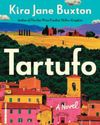
Every great story depends on conflict to propel it forward. Conflict is found in your book's overarching concept-the big idea-expressed in a way that highlights the tug-of-war between opposing forces. The more profound the conflict, the more compelling the read. Conflicts can be transcendent, fueling the plot of a sweeping epic novel or memoir, or they can be of limited scope, telling an important story by focusing on a single example. Broadly, there are four categories of conflict:
- Physical-an altercation or a threatened attack
- Emotional-a feeling that drives the character to act, such as loneliness, love, or depression
- Spiritual a loss of faith, self-doubt, or shaken beliefs
- Mental-an intellectual challenge or puzzle
Your story can focus on any one of these categories, some combination of them, or all of them.
Deciding whether a conflict is suitable for a certain story is a complex task. Not only do certain genres come with specific reader expectations, but the conflict has to be relatable.
All Conflicts Are Internal
On the face of it, it would seem that there are two kinds of conflicts: external and internal. However, it is people's reactions to an incident, not the incident itself, that generates a conflict. In other words, all conflicts are internal. If someone doesn't care about a situation, you don't have a conflict. This means, of course, that we need to understand what makes people care. Consider what other authors (see chart on next page) have observed about the anatomy of conflict, starting with one of America's founding fathers, Thomas Paine, who said, "The harder the conflict, the more glorious the triumph."
Storytelling Requires Conflict
It's easy to mistake premise for conflict. Consider this: In Victorian England, a couple meets and falls in love.
Do you see the problem? There's no conflict.
This story is from the May - June 2024 edition of Writer’s Digest.
Start your 7-day Magzter GOLD free trial to access thousands of curated premium stories, and 9,000+ magazines and newspapers.
Already a subscriber ? Sign In
This story is from the May - June 2024 edition of Writer’s Digest.
Start your 7-day Magzter GOLD free trial to access thousands of curated premium stories, and 9,000+ magazines and newspapers.
Already a subscriber? Sign In

What Is Your Story Question?
Revision and editing advice to take your first draft to the next level.

Writing for the People We Hope to Become
Elisa Stone Leahy's new middle-grade novel, Mallory in Full Color, tackles the in-between moments of adolescence, when who we are and who we want to become collide.

Creating Community
Whether hot off the presses or on the shelves for years, a good book is worth talking about.

Pat Barker
The Booker Prize-winning author of Regeneration shares the role characters play in developing novel ideas and explains what appeals to her about reimagining mythology.

How to Write in Different Genres
Emiko Jean and Yulin Kuang share tips and strategies for how they successfully write in different genres and mediums.

The Shortest Distance Between Two Points
Ten tips for writing a novel with 100-word stories.

Mayfly Marketing
How to sell your novel in a short-attention-span world.

"You'll be a great essay".
How to write six types of personal essays by finding the funny in your life.

The Idea Factory
Tired of staring at an empty screen? Unlock your inner fiction generator with these surprising inspiration techniques.

Seinfeld Was Right: That's a Story
Use mundane moments from everyday life to create stories that pack a punch.